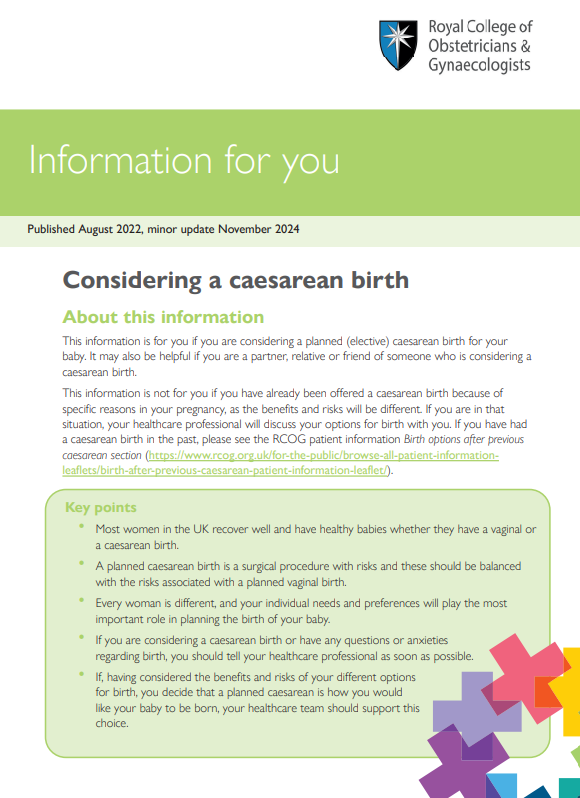There are three main reasons why induction of labour is offered.
NICE (National Institute for Health & Care Excellence) publishes national guidelines for clinical care. To access the guidelines on induction of labour, please visit the NICE website at www.nice.org.uk.

If you’re considering a caesarean birth, this resource from the Royal College of Obstetricians and Gynaecologists (RCOG) offers clear, evidence-based information to support your decision-making. Please see the full RCOG guide on caesarean birth for more information.
1. Your pregnancy has continued beyond 41 weeks
The most common reason for induction is to reduce the risk of prolonged pregnancy (going past your due date). This is usually offered between 41 weeks + 3 days and 42 weeks. The risk of stillbirth is very low in pregnancy (less than 2 in 1000 pregnancies); however, this risk has a small but significant increase beyond 42 weeks.
We offer induction before this time to try to reduce the risk of stillbirth.
Remember that it is important that you check your baby’s movements for any change in their patterns, and that you call your midwife or Triage if you are concerned at all.
Find out more on reducing the risk of stillbirth:
What is stillbirth and how can you reduce your risk? | Parent Club
2. There are medical concerns for you or your baby
If there are medical concerns with you or your baby and it is felt there is an increased risk with continuing the pregnancy. For example, if your blood pressure becomes too high, or there are concerns with your baby because they are not growing as much as expected.
3. Your waters break but you do not go into labour
Sometimes waters break before you have any contractions. This happens in about 1 in 20 pregnancies and is known as Pre-labour Rupture of Membranes (PROM).
For 8 out of 10 women, labour will start naturally within 24 hours.
If you are near to your due date, we will offer induction of labour 24 hours after your waters have broken if you have not gone into labour naturally. This is to reduce the risks of infection to both mum and baby.














